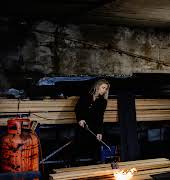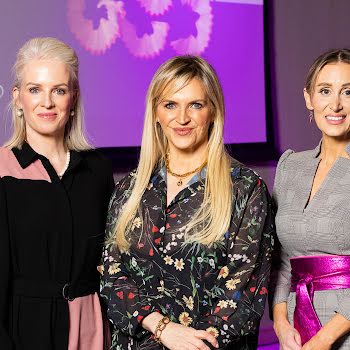
By Dominique McMullan
29th Feb 2024
29th Feb 2024
With two referendums fast approaching on March 8th, we’re breaking down the proposed amendments so you can be better informed ahead of casting your vote.
On March 8th, we are being asked to vote in two referendums to change Ireland’s constitution regarding gender and family. The amendments are being referred to as the ‘family amendment’ and the ‘care amendment’.
The Care Amendment proposes the removal of references to the role of women ‘in the home’ from the Constitution. Those references would then be replaced with a broader recognition of the care provided by all family members.
The Family Amendment focuses on the definition of a family, broadening it out from simply being based on marriage.
In contrast to recent referendums, such as marriage equality in 2015, the proposals in these amendments can be seen as nuanced, and there has been confusion about what they actually entail. So topline, what are we being asked to vote on?
What is the ‘family amendment’?
The first referendum refers to the proposed thirty-ninth amendment of the constitution and is colloquially known as the ‘family amendment’.
Right now, the constitution recognises the centrality of the family unit in society and protects the family founded on marriage.
This means that constitutional protection is only afforded to families founded through marriage. Families that are not married, (ie single parent families, families headed by a grandparent, unmarried cohabiting couples etc) are not protected or recognised.
The Family Amendment proposes to insert the words “The State recognises the Family, whether founded on marriage or on other durable relationships” into the constitution, and to delete the words, “The State pledges itself to guard with special care the institution of Marriage, on which the Family is founded”. Doing this will extend constitutional protection to families formed through other “durable relationships”, and put them on an equal footing with married families, according to the government.
What would the result of a yes vote be?
A yes vote on the family amendment would mean different types of family units would have the same constitutional rights and protections, and the institution of Marriage would continue to be recognised as an institution that the State must guard with special care and protect against attack.
According to Leo Varadker “Repurposing the wording acknowledges that families may also be founded on lasting relationships other than marriage.”
Yes campaigners argue that a Yes vote recognises that every family is different and every family counts.
What would the result of a No vote be?
A No vote would leave the wording of the constitution as is, and families existing outside of marriage would continue to have no constitutional protection.
The campaigners for a No vote are concerned about the lack of clarity about what constitutes a ‘durable relationship’.
What is the ‘care amendment’?
As it stands, The Constitution refers to the importance to the common good of the life of women within the home and that the State should endeavour to ensure that mothers should not have to go out to work to the neglect of their “duties in the home”.
The care amendment proposes deleting the current Article 41.2 which reads, “In particular, the State recognises that by her life within the home, woman gives to the State a support without which the common good cannot be achieved. The State shall, therefore, endeavour to ensure that mothers shall not be obliged by economic necessity to engage in labour to the neglect of their duties in the home.”
And inserting a new Article 42B which reads, “The State recognises that the provision of care, by members of a family to one another by reason of the bonds that exist among them, gives to Society a support without which the common good cannot be achieved, and shall strive to support such provision.”
What would the result of a Yes vote be?
A Yes vote would see the removal of Article 41.2 and the insertion of Article 42B. The new Article 42B would, firstly, recognise the importance to the common good of the care provided by family members to each other. Secondly, it would provide that the State would “strive to support” the provision of such care within families.
Advocates for the Yes vote have long been pushing for the elimination of what is deemed as outdated and gender-biased language from the constitution, originally written in 1937. Taoiseach Leo Varadkar said the amendments will “reinforce the fact that Ireland is a modern, inclusive nation that strives to treat and care for all its people equally.”
What would the result of a No vote be?
If a majority votes No, then the Constitution will remain unchanged. Article 41.2 would continue to recognise the importance to the common good of the life of women within the home. It would also continue to require the State to endeavour to ensure that mothers should not have to go out to work to the neglect of their “duties in the home”.
Campaigners for a No vote argue that the current constitution appropriately acknowledges the distinct role of women. They also believe that this amendment insulates the government from its responsibility to provide care. Some critics also argue that the wording presented by the Government in these referendums does not go far enough.
Additional details
The Family Amendment will be on a white coloured ballot paper. The Care Amendment will be on a green coloured ballot paper.
Check the register here.
You must vote at the polling station that is named on your polling information card, which will usually be your local polling station. Find out where to vote here.
Find out how to vote here.
What you need to vote
You don’t need to bring your polling information card with you to vote, just ensure that you have valid ID.
You can use the following documents to prove your identity:
A passport (either a passport card or passport book)
A driving licence
A workplace identity card (it must have a photograph)
A student identity card (it must have a photograph)
A travel document (it must have a photograph)
A Public Services Card
A bank or credit union account book with your name and address in the constituency
If you do not have any of the documents listed above, you can use one of the following, along with evidence of your address in the constituency:
A cheque book or card
A credit card
A birth or marriage certificate























